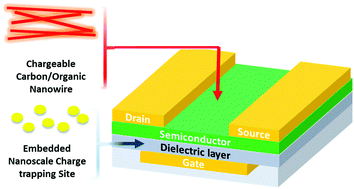Nanostructured materials for non-volatile organic transistor memory applications
Abstract
Over the past decades, the demand for organic memory has rapidly increased due to the development of flexible electronics. In this article, state-of-the-art nanostructured materials-based organic memory is reviewed, including nanoparticles, carbon nanotubes, graphene and nanowires. The operation mechanism and the impact of nanostructured materials on the electrical performance are discussed. Moreover, proposed charge-trapping mechanisms using nano-materials are reviewed to provide fundamental understanding as well as further performance improvement.


 Please wait while we load your content...
Please wait while we load your content...